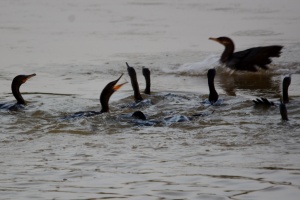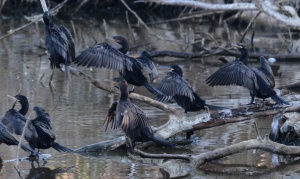One of the first birds I was close enough to photograph, after moving to the Valley, was a Neotropic Cormorant, Phalacrocorax brasilianus.
I had no idea what it was. Nor had I ever been close to a bird that big and that had such a wicked-looking, er . . . smile.
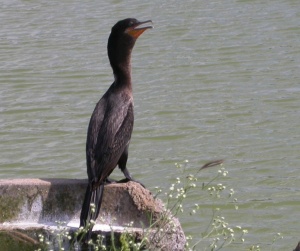
I admit, I was somewhat afraid, so I braced the camera, clicked off a number of shots, and skedaddled quickly when the bird turned its head to glare at me.
At home, I leafed through my favorite Texas bird book until I found the bird I had photographed. Not really so scary looking after all.
Therein lies the moral of this little tale. The unknown is usually the cause of our fears. That’s true about nature, especially.
By reading and learning about things like frightening fungi, strange critters, creepy-crawlers and even big birds whose characteristics are more phenomenal than a typical mockingbird, I learn about each species’ beneficial existence. I no longer fear the weird. Indeed, I’ve come to have a better respect and appreciation for the life that is all around us here in the Deep South of Texas.
Cormorants are in that category. When we came to view our current residence, a lone cormorant was standing sentry from a post in the middle of the Resaca. We saw it as a good omen.
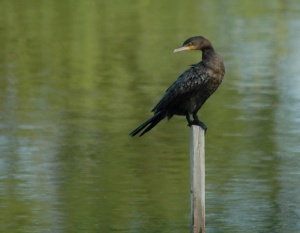
I’ve had hours of enjoyable photography and window-gazing at the antics of our cormorant and its friends and family.
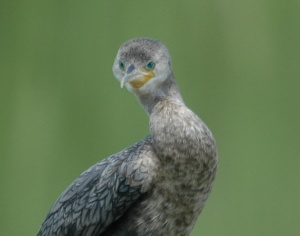
One summer, the cormorant left. I found myself pining the absence of what we’d come to think of as our talisman. Akin to a Londoner’s belief that “should the ravens ever leave Tower Bridge, the Crown, and Britain, will fall.” I tried to keep pending thoughts of doom at bay while hoping to see the cormorant return to its perch.
Cormorants primarily feed on fish as well as crustaceans, frogs, tadpoles and aquatic insects. They are powerful swimmers and have great eyesight both aerial and underwater. They dive from the surface or from a perch close to the water’s surface, and snag fish with their hooked bill while swimming. They can stay underwater longer than other diving birds – some have been observed to stay under for 80 seconds, according to some research. They surface to eat their catch.
While in the water, their body is submerged with only the head and a couple inches of neck visible, in imitation of a submarine periscope.

After emerging from the water, they often hold their wings and tail open (in open-cape Dracula fashion) in order to dry their feathers. I find them entertaining.
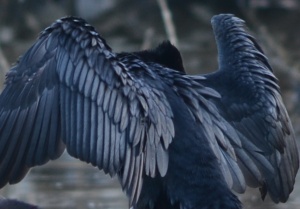
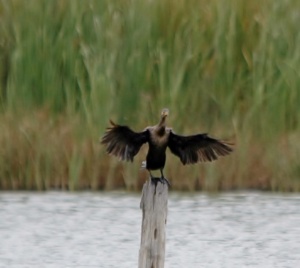
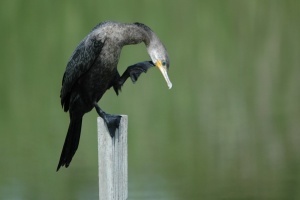
Call me a wee bit superstitious, but I wanted the cormorant’s return. I thought perhaps they had depleted the fish in our 17-acre, horseshoe Resaca. The freeze of 2010 had killed off first and second year blue tilapia. I decided a food supply increase was needed. A fishery near Corpus Christi has a pick-up point in Edinburg. I purchased catfish and three food chain levels below that: coppernose bluegill, golden shiners and fathead minnows.
Months later, a cormorant was once again perched on the post in the middle of the Resaca.

For the last couple of weeks this August, I’ve counted more than two dozen cormorants. Many are young, guarded over by adults, learning to dive, feed and fly. While the young are present, there is a lot of communication, soft, pig-like grunts. Soon, at 12 weeks, this year’s brood will be independent.
Google collective bird nouns for a fun read. For cormorants, the options are: a flight, gulp, rookery, sunning and swim.
